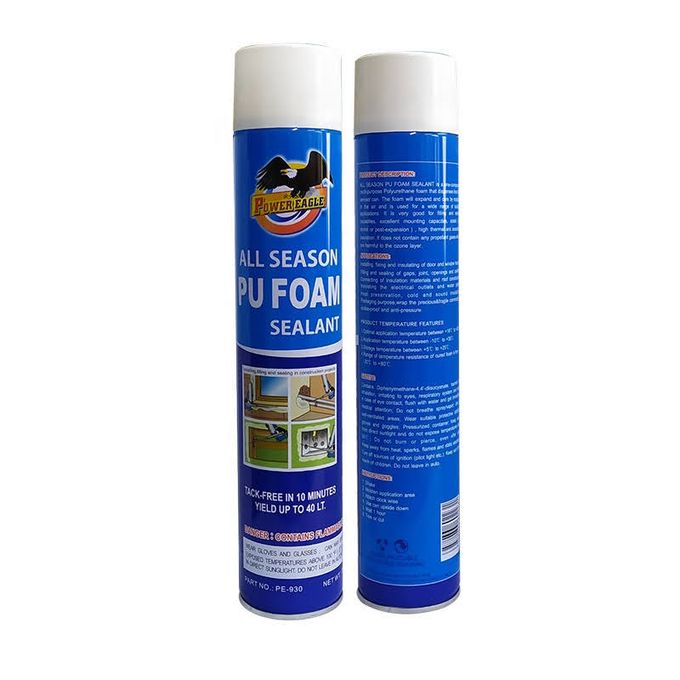POLYURETHANE FOAM IN KENYA
Kingsman Engineering & Industrial Insulation is the leading supplier of polyurethane foam in Kenya used for various applications such as thermal and sound insulation, cracks sealing shock absorption among others.
Power Eagle Polyurethane foam dispenses from aerosol can. It has a high rate of expansion on application and thereafter very stable: does not expand later or shrink. The expansion and is triggered by moisture in the air.
Applications of Polyurethane foam in Kenya
- Building applications in sealing of cracks
- Thermal insulation
- Acoustic Insulation
- Joints between separation walls, ceiling, and floors.
- Carpet underlay and packaging
- Vibration and shock absorption
- High Temp gaskets

Typical applications in Kenya & best-practice recommendations
Roof insulation (industrial & commercial)
Recommended type: closed-cell PU spray.
Typical thickness: 50–100 mm for retrofit roof thermal upgrades; up to 150 mm for high-performance or cold-store roofs.
Benefits: seals joints, prevents ponding moisture into substrate, improves watertightness when combined with suitable deck coatings.
Wall insulation (external and cavity)
Recommended type: closed-cell for external façades (vapour control); open-cell for interior acoustic infill.
Thickness guideline: 25–75 mm depending on target U-value and cavity width.
Cold rooms & refrigeration systems
Recommended type: closed-cell only — acts as a vapour barrier and prevents ice build-up.
Typical thickness: 75–150 mm depending on design temperature and wall panel construction. Use closed-cell to meet hygiene and thermal stability needs.
Pipe & tank lagging
Recommended type: closed-cell applied to flanges, junctions and odd shapes where pre-formed insulation cannot fit.
Thickness: typically 13–50 mm depending on temperature and condensation control requirements.
Soundproofing & acoustic control
Recommended type: open-cell for internal acoustic lining (stud walls, service risers, plant rooms).
Thickness: 50–100 mm for effective absorption in mid-high frequency bands.
Gap filling & void sealing
Recommended type: open-cell for non-structural void filling; closed-cell for sealed voids where moisture ingress is a concern
Frequently Asked Questions (FAQs) on Polyurethane Foam in Kenya
Q: Can I DIY polyurethane foam?
A: No. Professional application is strongly recommended. Improper mixing, incorrect ambient conditions, or wrong pass thickness causes poor cure, off-gassing and adhesion failures.
Q: How long does P U foam take to cure and when is the area safe?
A: Tack-free is a few minutes; full cure is usually 24 hours. Re-entry times vary (4–24 hours) depending on ventilation and product; Kingsman will advise for each job.
Q: Is Polyurethane foam waterproof?
A: Closed-cell is highly water-resistant and acts as a vapour retarder. It is not a substitute for a waterproof membrane on exposed roofs unless paired with appropriate coatings.
Q: Will foam attract pests or rot?
A: No — foam itself does not rot. Proper finishing prevents nesting; open surfaces should be sealed or covered.
Q: How thick should I put polyurethane foam for a typical roof in Kenya?
A: For thermal upgrades, closed-cell 75–100 mm is a common target for good year-round performance. Kingsman will model the exact U-value and recommend thickness based on your project.
Q: Is spray foam compatible with refrigeration systems?
A: Yes — closed-cell is ideal for cold rooms, preventing condensation and thermal bridging. Use products compatible with low-temperature service.
Q: Do you offer coatings / finishes?
A: Yes — Kingsman supplies protective roof coatings, fire retardant coatings and thermal barriers as required.
